July 12, 2025
Top 5 Sharks You Might See in the Galápagos
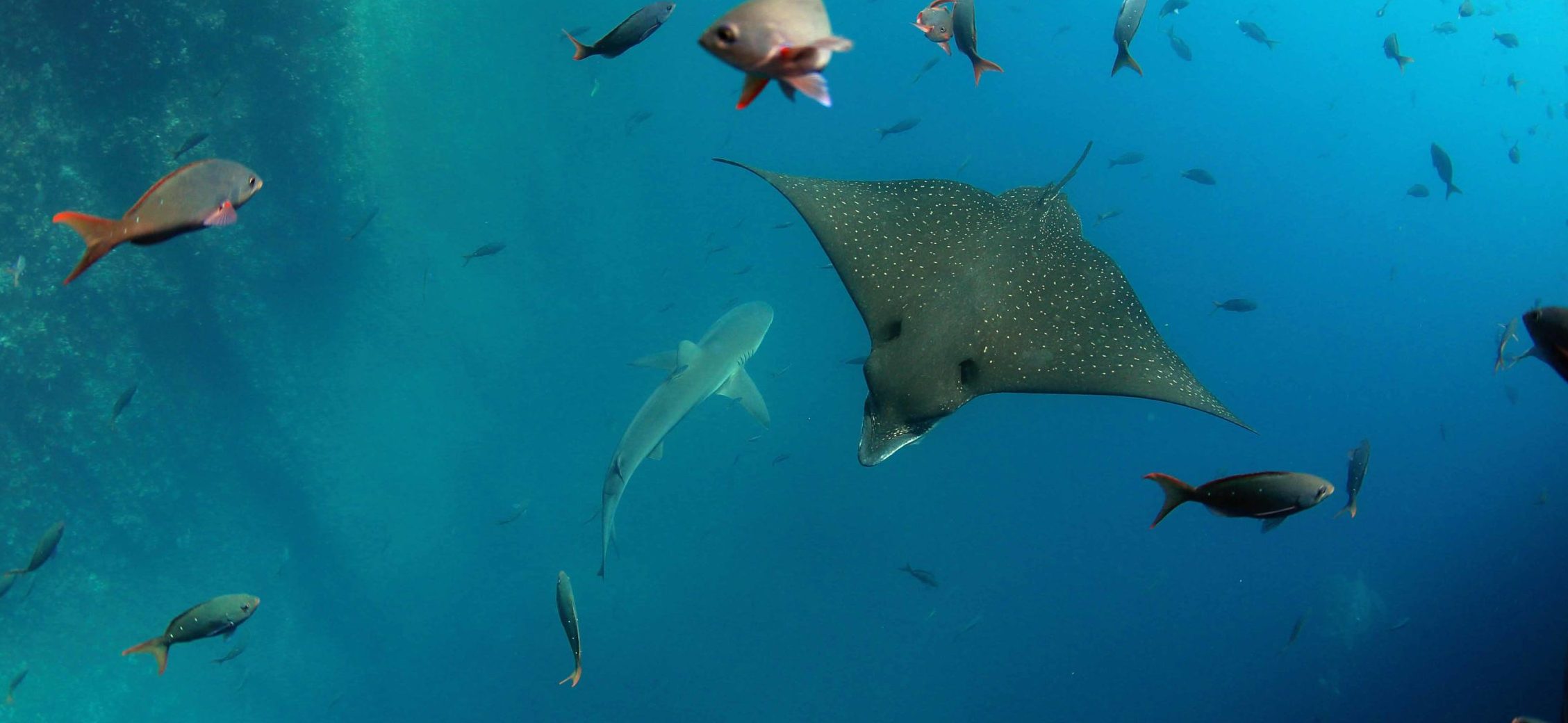
The Galápagos Islands are home to over 30 species of sharks, drawn to some of the most nutrient-rich waters on the planet. While not every species is easy to spot, the Galápagos remains one of the rare places in the world where shark populations are still thriving, a true sanctuary for these misunderstood predators.
If you’re joining a land-based tour, rest assured you’ll still spend plenty of time in the water. At Galakiwi, we specialize in snorkeling, kayaking, and stand-up paddleboarding around San Cristóbal, Isabela, Santa Cruz, and Floreana, and these activities often lead to incredible marine encounters, sharks included.
Interested in scuba diving? We can add diving experiences to any tour, giving certified divers the chance to explore deeper sites like Gordon Rocks or Kicker Rock. Just let us know your preferences and we’ll help craft a personalized Galápagos adventure that suits your style. Contact us here
And yes, even without diving, you’ll have plenty of chances to spot sharks from the surface or just below, especially if you know where and when to look. Some species, like white-tip reef sharks and blacktips, are often seen while snorkeling close to shore. With our experienced local guides by your side, you’ll benefit from their deep knowledge of the best spots and times for safe, memorable encounters.
Why Are There So Many Sharks in the Galápagos?
The Galápagos is influenced by a mix of ocean currents, most notably the Humboldt and Cromwell currents, which bring cold, nutrient-rich water from the deep. These upwellings feed plankton blooms that support all levels of the food chain, from small fish to whales and, of course, sharks.
While many shark species live here, actually spotting them takes a bit of luck, depending on water conditions, visibility, and time of year. Below are some of the species you’re most likely to encounter on your tour.
Sharks You Might Spot During Your Tour
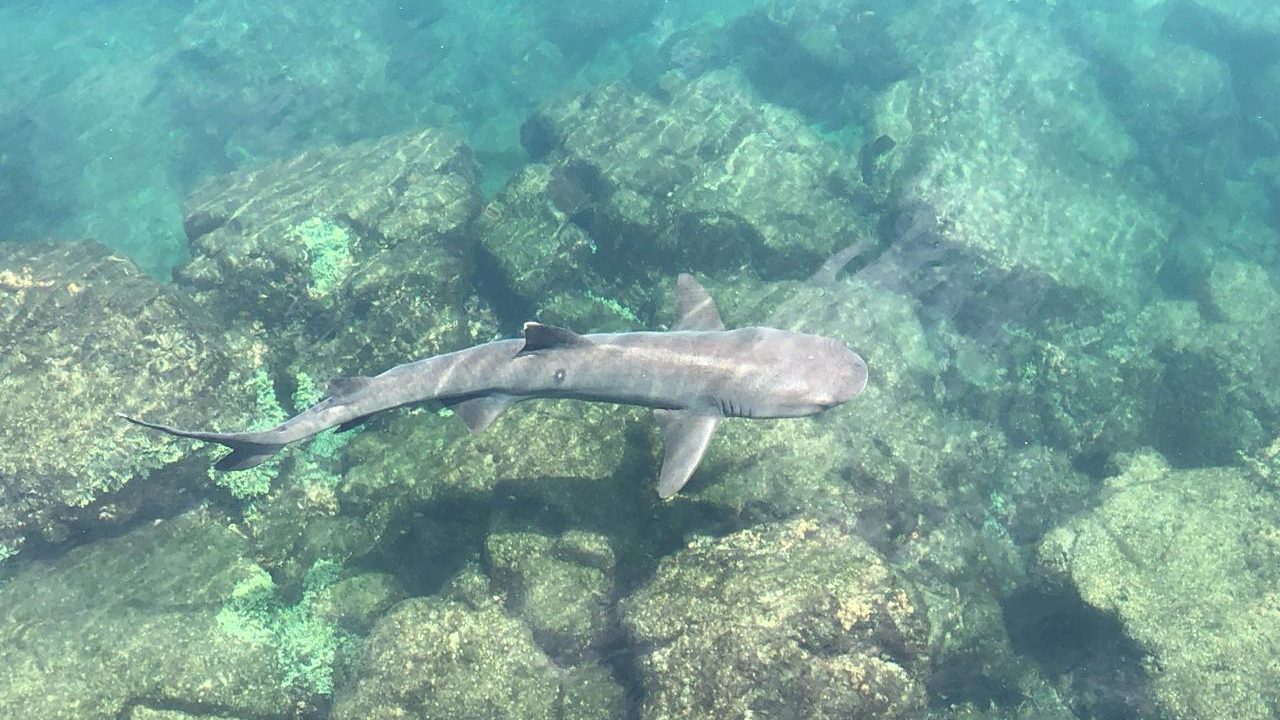
Whitetip Reef Shark (Triaenodon obesus)
Best Spots: Common around Isabela, Santa Cruz, and Floreana
The most frequently seen shark on our tours. These calm, reef-dwelling sharks are often spotted during snorkeling sessions, especially in clear, shallow waters like Las Tintoreras near Isabela, where you might even see them resting from land. They’re most active at night, but easy to spot during the day due to their resting habits in reef crevices.
Fun Fact: Whitetip Reef Sharks have extremely strong site fidelity; they often stay within the same small home range on a reef for years. Some individuals have been observed returning to the exact same resting spots day after day, almost like having a favorite couch!
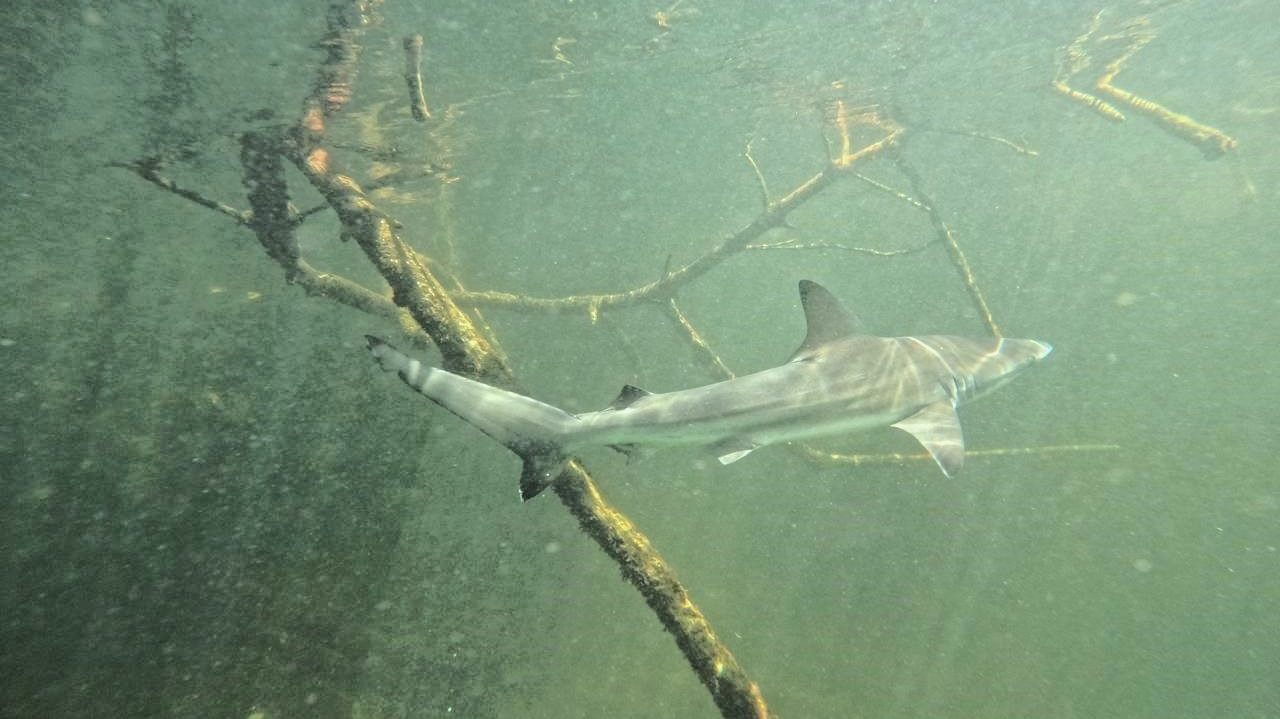
Blacktip Reef Shark (Carcharhinus melanopterus)
Best Spots: Shallow bays and mangroves near Isabela and Santa Cruz
Agile and graceful, blacktip reef sharks are commonly seen cruising through coastal shallows, often in sandy-bottomed areas or near mangrove roots. While quick to move away when humans approach, they’re still a relatively common sight on snorkeling tours.
Fun Fact: Female Blacktip Reef Sharks often return to the same shallow nursery areas where they were born to give birth. These safe, shallow waters help protect newborn pups from larger predators.
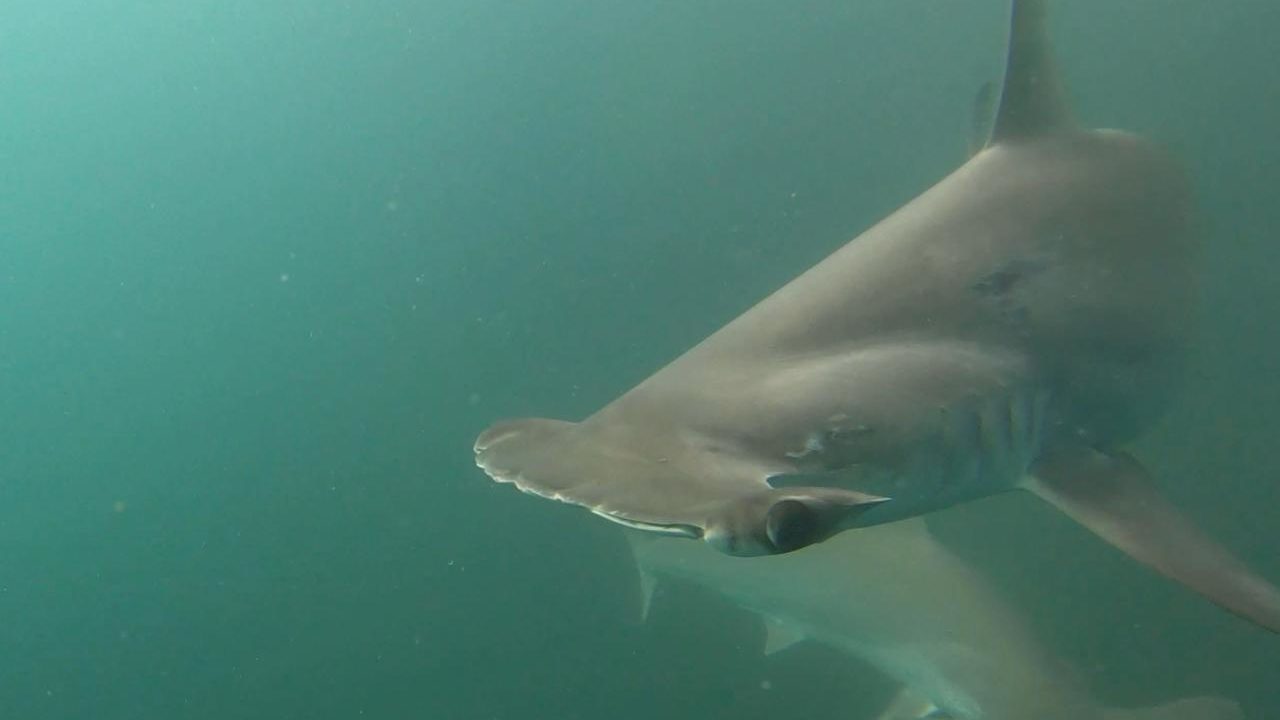
Scalloped Hammerhead Shark (Sphyrna lewini)
Best Spots: Kicker Rock (San Cristóbal), deeper channels
Hammerheads are one of the most iconic shark species in the Galápagos, though not always easy to spot. At Kicker Rock, the nutrient-rich currents occasionally bring them closer to snorkeling depths. While large schools tend to stay deeper, single individuals are sometimes seen gliding below the surface.
Fun Fact: Their uniquely shaped head, called a “cephalofoil,” isn’t just for show, it enhances their sensory perception by spreading out their electroreceptors and improving vision. This helps scalloped hammerheads detect prey hidden in the sand and navigate complex environments more effectively.
👉 Learn more about scalloped hammerhead conservation
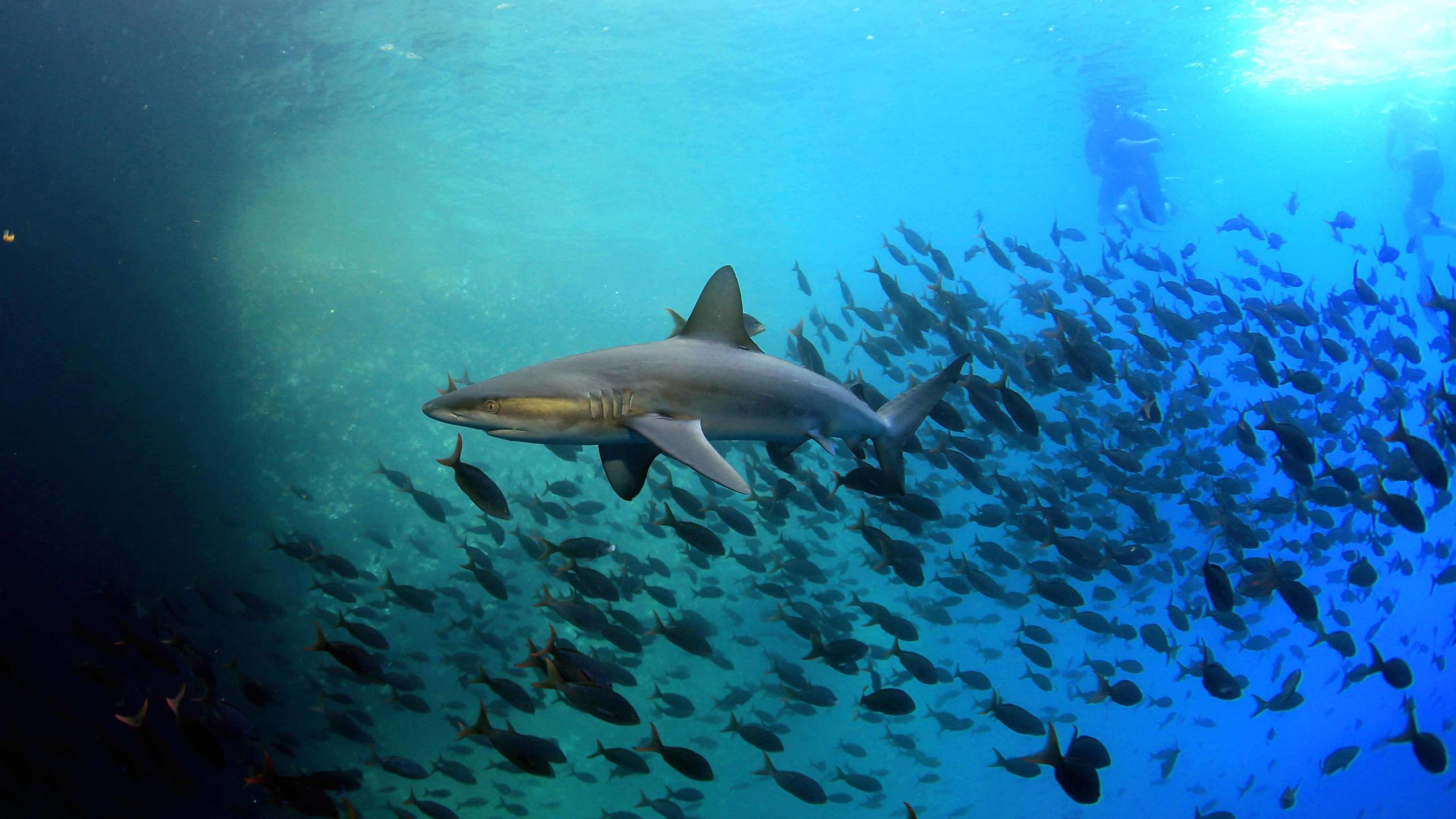
Galápagos Shark (Carcharhinus galapagensis)
Best Spots: Deeper water off San Cristóbal or Isabela
Galápagos sharks are large and powerful but tend to stay deeper. Sightings are possible near Kicker Rock or during deeper water crossings, especially in areas with strong currents, but these moments are less common and often brief.
Fun Fact: Galápagos Sharks are highly territorial, patrolling the same reef areas for years. They’re very curious, often circling boats and swimmers, but generally aren’t a threat unless provoked.
Whale Sharks
Best Spots: Occasionally between islands, especially July–November
The whale shark is the largest fish in the ocean, reaching lengths of over 12 meters. Despite their size, they pose no threat to humans. Whale sharks are filter feeders, meaning they swim with their mouths open to feed on plankton, fish eggs, and other small organisms.
In the Galápagos, sightings are rare but possible, especially during inter-island boat rides in the cooler season (July to November), when plankton levels are high. They tend to appear in deep, open waters, and encounters typically depend on timing, sea conditions, and a bit of luck.
Fun Fact: Each whale shark’s spot pattern is as unique as a human fingerprint! Scientists actually use these spot patterns, especially the ones around the gills, to identify and track individual whale sharks. They even use astronomy software, originally designed to map stars, to help match these spot patterns from photos!
Where You’re Most Likely to See Sharks on a Galakiwi Tour
Here are a few places on our routes where shark sightings are most common:
- Las Tintoreras (Isabela) – Calm, shallow area ideal for spotting whitetip reef sharks resting among lava rock channels. Great for beginners and often visible even from shore.
- Kicker Rock (San Cristóbal) – A dramatic snorkeling location where hammerheads, Galápagos sharks, rays, and sea turtles may appear. Great visibility, but stronger currents.
- Los Túneles (Isabela) – A unique snorkel site of lava arches and underwater tunnels. Whitetip and blacktip reef sharks are sometimes seen swimming through the clear channels, along with sea turtles and seahorses. Ideal for peaceful, up-close encounters in a stunning underwater setting.
- Inter-island crossings – When conditions align, open-water sightings of larger species like whale sharks or manta rays are possible. Your guide will always assess safety and conditions for the opportunity to stop and jump in for a closer look.
Respectful Encounters, Real Impact
Sharks aren’t just impressive to see—they’re crucial to the health of the Galápagos marine ecosystem. Spotting them in the wild is a privilege, and when you travel with Galakiwi, we make sure that experience is respectful, educational, and sustainable. Our guides follow strict conservation practices to help protect these species for future generations.
👉 Curious what it’s like? Read more about what swimming with sharks is really like
If you’re a shark enthusiast or simply want to maximize your time in the water, we highly recommend our 10-day Tour or our 10-day SUP & Kayak Tour both offer plenty of opportunities for snorkeling and exploring the rich marine life of the Galápagos.
